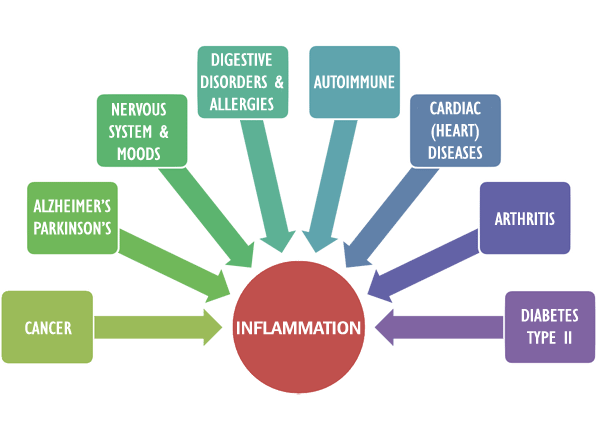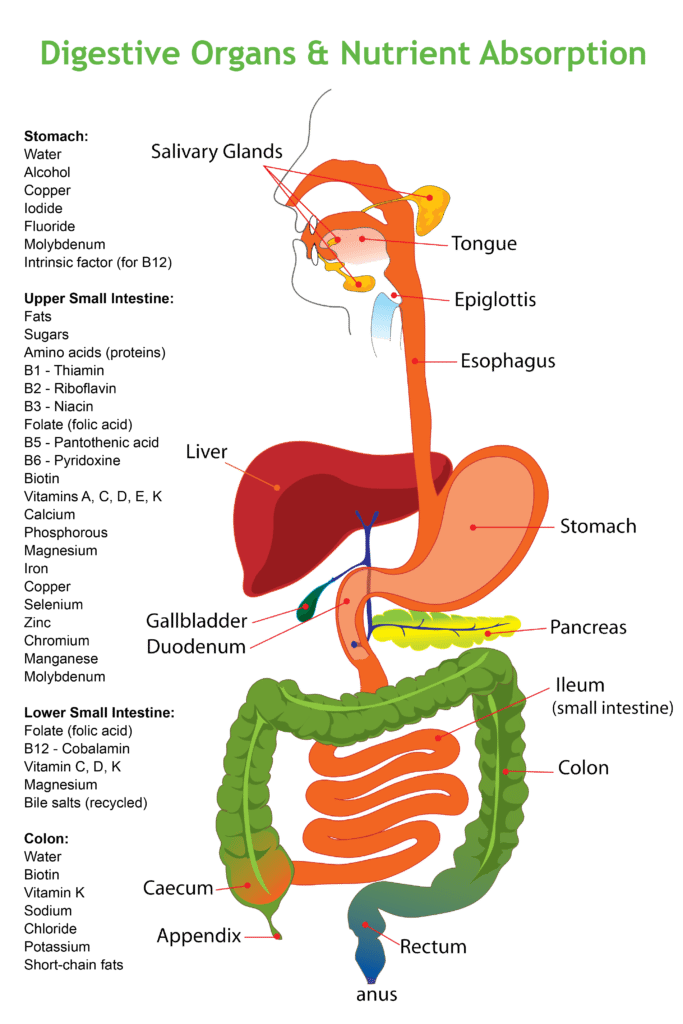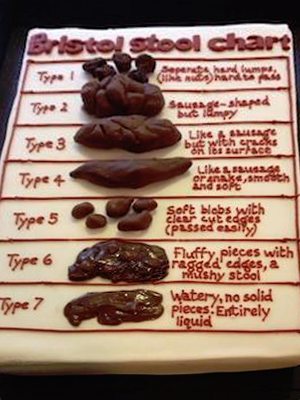
Solve inflammation by healing digestion

How digestion is supposed to work
Proper digestion starts before you eat. Your nervous system—the branch involved in routine functions so you don’t have to think about them—is actually split into two parts: fight/flight/get up and go and rest/heal/digest.
When you eat, your body needs to be in the ‘rest/heal/digest’ mode. To digest your food, you need to eat mindfully. It’s VITAL to create a CALM environment. No kids fighting, no racing to meet deadlines while you eat… nothing that puts you into fight/flight because that shuts down your digestive tract. Please sit and enjoy each meal.
As you put your calmly-prepared food into your mouth, CHEW! Break those particles down and mix them with enzyme-rich saliva so they can be digested.
Nerves in your mouth tell the rest of your digestive track what it has been given. Your stomach, small intestine and pancreas (point) begin to get ready to receive that food.
Also, pay attention. Does the food taste right? Do you feel energy? Lose energy? If your body is sensitive to the food, it may tell you that right away. You may immediately feel tingling, skin rashes, redness… or an energy drop or headache.
You swallow—the food lands in your stomach. These chewed up small particles are a lot easier for the stomach to handle. Your stomach’s job is both mechanical—make food smaller—and chemical—begin to unravel the nutrient molecules so they can be broken down.
If your body doesn’t like this food or your stomach isn’t making the right gastric juices to process it, you will know in about 20-45 minutes. You’ll feel “heartburn”, bloating, possibly over-full.
Depending on the type of food, it can stay in your stomach from about 30 minutes to over an hour. In order for your stomach to empty into your small intestine (see diagram), stomach contents have to drop to a pH of 2.0—close to battery acid. STOMACH ACIDITY IS VITAL. Without enough stomach acid, we do not release minerals from food, we’ll have low calcium or magnesium. We also won’t make factors needed to absorb B vitamins, especially B12. And the acidity kills unwanted bugs, parasites, etc.
OK, so let’s look at this:
In a rush, Joe wolfs his Subway Sandwich in under 60 seconds and four bites, it lands in his unprepared stomach which begins to protest. The anti-food ferments rather than digests producing gas and pressure—Joe feels bloated and might have some reflux so he takes TUMS to neutralize his stomach acid. Eventually, he is prescribed stomach acid inhibitors (the most common are named proton pump inhibitors).
The problem is, we need stomach acid. Whether it’s TUMS or prescription, blocking stomach acid production:
- prevents calcium and other mineral absorption
- prevents B12 absorption
- make it possible for unwanted pathogens to get through our defense mechanism
- upsets the balance of healthy bacteria living in our digestive tract. (more on healthy bacteria coming later…)
A really common thing people say who don’t make enough stomach acid is that they can’t digest meat.
If you get heartburn for any reason, definitely get this checked at your next Nutrition Response Testing visit.

From your stomach to your small intestine
As the stomach reaches pH 2.0, the food is in tiny little bits and unraveled, it all now moves into the small intestine.
If you took your small intestine out and unraveled it, its length would equal the distance from the net to the back of a tennis court—about 20 feet. This enormously long tube continues the main functions of your digestive tract:
- Breaking down and absorbing nutrients
- Preventing foreign substances (or incorrectly digested food) or pathogens from entering our body
Key other organs—your pancreas and your liver/gallbladder—make enzymes to help you break protein chains and starches into individual nutrients (amino acids and sugars, if you want to say it). They also help emulsify fats.
Despite its long length, food spends only 6-8 hours in your small intestine. Yet ALL your nutrients should be completely broken down and absorbed by your small intestine before it moves into the remaining section of your gut: your colon (large intestine)
... and into your colon
Whatever is left of your meal—assuming you chewed (look at all that happens in your mouth), assuming you made enough stomach acid (look at all that happens in your stomach), assuming you made enough digestive enzymes (coordinated by your pancreas, gall bladder and small intestine) and assuming you absorbed the nutrients from the food you ate…
There is nothing left except the part that you can’t digest—which is mostly fibers which move into your large intestine.
Your large intestine works with your kidneys to make sure your fluid and electrolyte (mostly salt and potassium) are in balance. Although your large intestine is only about 5 feet long, what’s left of a meal can spend up to 40 hours in it, depending on how healthy it is, or isn’t.
...and out... let's talk poop 🙂
Indeed, annually in Bristol, digestive health experts meet to discuss poop. They bake a cake and celebrate! Some people celebrate if they have a #2. Take a look; what’s your type?
If you are not pooping at least once a day, the most common reason is that you are not drinking enough water. Second reason is not enough vegetables.
Drink plenty of clean spring water—1/2 your weight = ounces of water every day.
Flush the toxic waste out of you and maintain your energy by keeping your body hydrated. Low energy and not enjoying yourself are the first signs of dehydration—feeling thirsty comes later.
Please, please, please… that is why I ask you to mark whether or not you have BMs on you Food & Mood log. Don’t skip it, for your sake.

Let's fix this: Your food and mood log
You want to know if you can eat a food or whether it is causing unwanted symptoms.
The only way to know is your Food & Mood log.
It is pretty easy to see that Johnny has a peanut allergy because he gets red right away. Sarah’s sensitivity to dairy causing reflux and bloating; that’s going to happen an hour or so after a meal. Pretty simple.
But what about when a food causes excruciating back pain two days later? Not so easy.
And that is why it is so vital to track everything that goes in your mouth on your Food & Mood Journal.
I’m here to interpret; please scan and send to marie@synergynutrition.info
Pat self on back for all changes you have made, so far!
See you in the next section 🙂
